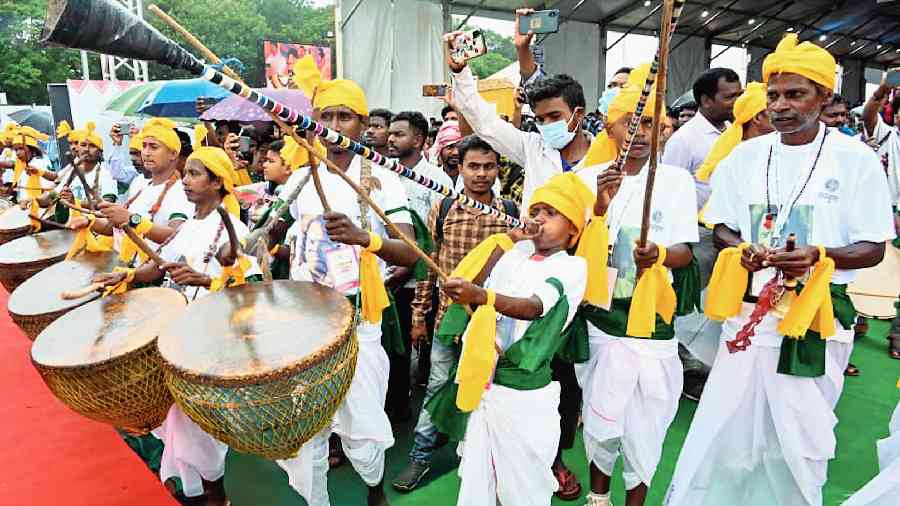For many tribals in rural Jharkhand, Tuesday was just another day though the state government observed it as the International Day of the World’s Indigenous Peoples, commonly known as the International Tribal Day, with much fanfare in the state capital Ranchi.
“Moi nehi jana tho (I’ve no idea),” Amarmani Kerketta, a housewife of a hamlet named Pahartoli, located about 18km away from Simdega district headquarters, replied in the local Sadri dialect when asked if she was aware of the importance of the day.
It was around the same time when JMM supremo and Rajya Sabha member Shibu Soren opened the two-day Janjatiya Mahotsav (tribal festival) in Ranchi’s Morabadi ground, about 175km away from her hamlet, by lighting lamp and beating a nagara (tribal drum) as others, including chief minister Hemant Soren and tribal welfare minister Champai Soren, looked on.
“The male members of my family are away in the field trying hard to finish as much sowing as possible in the rain-starved fields and now I have to carry food that I cooked for them,” Amarmani told when contacted through a common acquaintance, adding she had no time for anything else.
Amarmani was not alone, there were scores of her likes in the rural areas of Jharkhand. “Let alone observing it, most of them in the countryside have not even heard about the tribal day,” said Mukut Dungdung, a farmer from Latakaman village, about 12km away from Simdega town, adding he had to rush to the town for procuring seeds and was not even aware if any programme was being held in that district town for observing the day.
“The rainfall is inadequate this year and most of the sowing is yet to be done except in the low lands that are somewhat moist due to rain waters those had accumulated,” he informed, adding he came to the town to procure urad (black gram) seeds so that it can be grown in his highland fields.
According to data released by the Ranchi Meteorological Centre on Tuesday, the Simdega district received only 50 per cent of normal rainfall to date, while the rain deficit of the state stood at 48 per cent.
Though Jharkhand is often described as a tribal state, not many are aware that according to the 2011 census, the Scheduled Tribes (ST) constituted only 26.29 per cent of the state’s total population of 3.29 crore at that time.
Of the 86.5 lakh tribal population comprising 32 notified ST, including 9 particularly vulnerable tribal groups, there were 27.5 lakh Santhals — the largest tribal group that accounted for 31.9 per cent of the total ST population — while Khond was the smallest tribal community with just 221 members. There are only 5 of the total 24 districts of the state — Khunti, Simdega, Gumla, West Singbhum and Lohardaga — that have a tribal majority with an ST population ranging between 57 and 73 per cent.
Of the total 29,492 census villages of Jharkhand, there are about 4,000 villages that have over 90 per cent ST population while 2,451 villages are inhabited by the tribals.
An interesting fact about Jharkhand is that its ST has an impressive sex ratio of 1003, meaning there are 1003 females against every 1,000 tribal males in the state.










